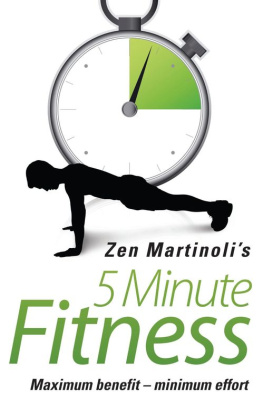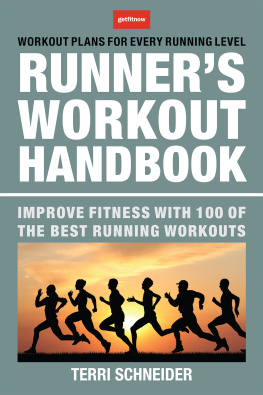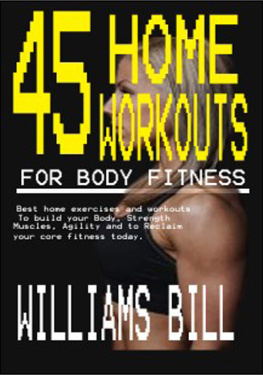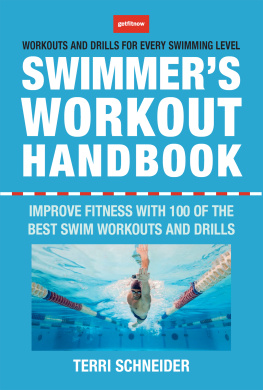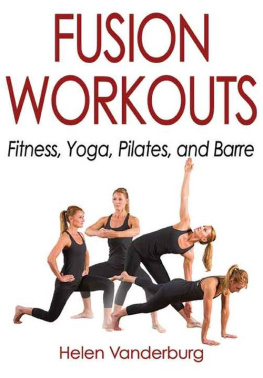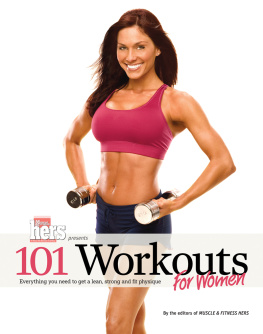Thank you to Lisa, Richard and Edward for your valuable time and perfectly executed exercise instruction visuals! You were all very patient and brilliantly professional models.
Contents
Chapter One
Introduction to the Mini-workout
Mini-Workouts explained in detail, the benefits,
how they work and safety advice.
Chapter Two
Introduction to Physical Fitness
Analysis of physical fitness, its components and
how they relate to 5 Minute Fitness. Advice on
how the sedentary or unfit person should approach exercise.
Chapter Three
Pre- and Post-Workout Procedure
The importance of warm-up, cool down,
flexibility and stretching.
Chapter Four
Index of Exercises
A complete list of all the exercises employed within
the book, plus image references and exercise instructions.
Chapter Five
Level 1
Introduction to Level 1
Mini-Workouts
Chapter Six
Level 2
Introduction to Level 2
Mini-Workouts
Chapter Seven
Level 3
Introduction to Level 3
Mini-Workouts
It is important that you consult your doctor before attempting any of the workouts in this book if you are just starting out on physical activity. If you have any underlying medical health issues or biomechanical deficiencies (problems with joints), a heart condition or high blood pressure it is essential that you get the relevant clearance. Use the workouts sensibly and should you feel pain at any point, stop exercising. It is important to make a clear distinction between feeling the discomfort of intense exercise and exacerbating a problem by continuing. Avoid exercise when suffering any temporary ailments, such as colds, fevers, etc.
Important: Due to the nature of mini-workouts being high in intensity (level of difficulty), they are not suitable for the complete beginner, unfit or sedentary person. If you fall into this category, please read the introduction to physical fitness (Chapter Two) before attempting any of the subsequent levels, which will give you a rounded idea as to why and how the mini-workouts are approached. Within this chapter the individual components of fitness are explored in detail as well as the benefits derived from them in isolation. This book, however, incorporates all of these aspects of fitness targeted simultaneously.
What is the Mini-Workout?
Within these pages is a wide variety of short, high-intensity workouts which can be employed anywhere, at any time and with no equipment required except for a timer/stopwatch in some instances. All workouts use only bodyweight and are suitable for both men and women who are free of injury or biomechanical limitations and have no underlying medical issues.
This book is not intended to replace your current exercise programme (if you have one!) but will instead enhance and complement it. Used correctly, however, it could in itself provide a perfectly sufficient workload to maintain and gain health and fitness benefits. Its intended use is for people who find it hard to get to the gym or for those away on trips who want to sustain their current fitness levels conveniently in their own time and with no equipment.
The mini-workouts are designed to accommodate occasional exercisers through to advanced exercisers. There are three levels in total with progressions throughout each level. Although these workouts are not sports-specific, the intention is to hit all areas of fitness within the limitations of time and equipment, improving anaerobic and aerobic fitness while building lean muscle and burning fat.
The terms aerobic and anaerobic refer to energy pathways that are utilised during exercise. Different types of activity will determine which energy systems are engaged to produce energy for the working muscles. In order to improve aerobic or anaerobic fitness, one must engage in the specific types of activities associated with each as explained here:
Aerobic means with oxygen
This energy system is activated during prolonged periods of activity in order to sustain continuous exercise, often referred to as steady state or continuous. During aerobic exercise, the body creates energy by utilising oxygen in a complex and gradual chemical process to break down glucose which in turn releases energy. Long-distance running, jogging and cycling are typical examples of aerobic exercise.
Anaerobic means without oxygen
The anaerobic system is activated during short, explosive bouts of activity. This instant demand requires a more rapid chemical process to take place whereby energy is derived from the short supply of stored body chemicals without the use of oxygen. Sprinting and weightlifting are typical examples of anaerobic exercises.
Fitness propagates fitness and so the more you acquire, the quicker the gains. Being able to work at a consistently higher level is the key to unlocking the door to your true physical potential.
The 5 Minute Fitness workouts have been designed to exploit minimum time into maximum benefit with minimum effort. Dont be misled by minimum effort as this relates to the volume of time spent working out: you will be required to put considerable effort into the allotted time frame per workout.
So, how can short workouts be effective? It has been widely accepted for many years that in order to burn calories/fat you have to train aerobically for an extended period of time (twenty minutes or more) at a moderate intensity as, during this time, fat is metabolised as fuel. However, research now shows high-intensity exercise produces up to nine times more fat-loss benefit for every calorie burned than low-intensity exercise.
Why is high-intensity training more effective at burning fat than long, moderate aerobic training? Its all to do with a four-letter acronym: EPOC (Excess Post-Exercise Oxygen Consumption), a scientific way of describing the calories you burn post-exercise.
During aerobic exercise you only burn calories while you work, utilising fat as fuel over an extended period at a moderate to low intensity. However, with high-intensity exercise (even as short as four minutes at a time), your body continues to burn calories for up to two days more, repaying the oxygen debt to your muscles and making this method much more efficient in terms of time investment versus calories burned.
These workouts are designed so that you can dip in and out as you please but are not intended as a programme. Instead, they should be used to supplement those times when you are away on trips or during periods when you cant make the gym. If you prefer to use the book as a stand-alone guide, I will make recommendations as to frequency of use and which workouts should be employed (and when) at the beginning of each level. The primary intention of this book is to encourage maximum benefits to fitness in minimal time and the protocols below are a feature of each level. All can be considered as being under the umbrella of high-intensity training, so lets take a closer look.

